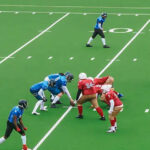The clarinet is a versatile and expressive woodwind instrument that has charmed audiences across centuries and continents. Known for its warm tone and broad range, the clarinet plays a significant role in classical music, jazz, marching bands, and contemporary compositions. This article offers an in-depth look at the clarinet’s origins, structure, playing techniques, notable musicians, and enduring cultural relevance. Whether you’re a budding musician, a music educator, or a curious enthusiast, this guide will deepen your appreciation of one of music’s most captivating instruments.
History of the Clarinet
Early Ancestors
The clarinet evolved from earlier single-reed instruments such as the ancient Greek aulos and the medieval chalumeau. The chalumeau, in particular, closely resembled the clarinet but had a more limited range and dynamic capability.
The Invention of the Modern Clarinet
Johann Christoph Denner, a German instrument maker, is widely credited with inventing the modern clarinet’s around 1700. He added a register key to the chalumeau, extending its range and allowing for more expressive possibilities. This development marked the birth of the clarinet’s as we know it today.
Evolution Through the Centuries
Throughout the 18th and 19th centuries, the clarinet underwent numerous modifications to improve its tuning, mechanics, and playability. Innovations such as the Boehm system, which standardized keywork and fingerings, helped the clarinet become a mainstay in orchestras and ensembles around the world.
Anatomy of the Clarinet
Key Components
- Mouthpiece: Holds the reed and shapes the tone.
- Barrel: Connects the mouthpiece to the upper joint and influences tuning.
- Upper Joint: Contains keys and tone holes for the left hand.
- Lower Joint: Contains keys and tone holes for the right hand.
- Bell: Projects sound and enhances lower frequencies.
Types of Clarinets
- B♭ Clarinet: The most common type used in bands and orchestras.
- A Clarinet: Favored in classical orchestral music for certain key signatures.
- E♭ Clarinet: Smaller and higher-pitched, used for color and brilliance.
- Bass Clarinet: Larger and deeper, often used for dramatic or mellow tones.
- Contrabass and Contra-alto Clarinets: Even larger instruments with rich, deep sounds.
Playing the Clarinet
Embouchure and Breath Control
A proper embouchure—how a player shapes their mouth around the mouthpiece—is crucial to producing a clear and stable tone. Breath control, including diaphragm support and airflow regulation, allows for dynamic playing and extended phrases.
Finger Technique
The clarinet’s complex key system requires dexterity and precision. Beginners focus on mastering finger placement and coordination, while advanced players work on speed, articulation, and fluency across registers.
Articulation and Expression
Clarinetists use a variety of tonguing techniques—legato, staccato, and double tonguing—to articulate notes clearly. The instrument’s dynamic range makes it ideal for expressive playing, from gentle pianissimos to powerful fortissimos.
The Clarinet in Different Musical Genres
Classical Music
The clarinet’s holds a prominent place in the classical canon, with concertos, sonatas, and orchestral parts composed by Mozart, Brahms, Weber, and more. Its ability to blend with strings, woodwinds, and brass makes it indispensable in symphonic settings.
Jazz and Swing
In the early 20th century, the clarinet’s was a leading instrument in jazz. Legends like Benny Goodman, Artie Shaw, and Sidney Bechet elevated its status during the Swing Era. Its bright tone and agility make it perfect for improvisation and soloing.
Folk and World Music
The clarinet features prominently in Klezmer, Turkish, Greek, and Indian folk music traditions. Its voice-like qualities allow it to mimic human emotion, making it a powerful tool for storytelling.
Contemporary and Experimental
Modern composers use the clarinet’s in experimental music, electronic compositions, and interdisciplinary performances. Extended techniques such as multiphonics, glissandi, and slap tonguing expand its sonic palette.
Notable Clarinetists
Classical
- Sabine Meyer: A pioneer for women in classical wind playing.
- Martin Fröst: Known for technical mastery and interpretive brilliance.
- Richard Stoltzman: A Grammy-winning artist who bridges classical and jazz.
Jazz
- Benny Goodman: The “King of Swing” who brought the clarinet to the forefront of popular music.
- Artie Shaw: Renowned for his virtuosic solos and innovative arrangements.
- Don Byron: A versatile performer who crosses jazz, classical, and klezmer styles.
Clarinet Construction and Maintenance
Materials
Most student clarinets are made from plastic resin, while professional models use grenadilla (African blackwood) for a richer tone. Newer designs incorporate synthetic materials for durability and consistency.
Reeds
Reeds come in various strengths and cuts, affecting tone and response. They must be moistened before playing and replaced regularly.
Cleaning and Care
Proper maintenance includes swabbing the inside after playing, oiling the bore, and checking pads and corks. Regular servicing ensures optimal performance and longevity.
Learning and Teaching the Clarinet
Getting Started
Beginners typically start on the B♭ clarinet. Learning basic notes, rhythms, and reading sheet music are initial milestones.
Private Lessons and School Bands
One-on-one instruction accelerates progress. School bands offer ensemble experience and teach cooperation, tuning, and listening skills.
Resources and Tools
Method books, online tutorials, and mobile apps provide accessible support. Tools like metronomes and tuners help refine technique.
Buying a Clarinet
Choosing the Right Instrument
Consider factors like age, skill level, and budget. Beginners may opt for affordable plastic models, while serious students transition to wood clarinet’s.
Trusted Brands
Buffet Crampon, Yamaha, Selmer, and Backun are respected manufacturers known for quality instruments at various levels.
Accessories
Essential accessories include a sturdy case, cleaning supplies, multiple reeds, and a neck strap or thumb rest for comfort.
Conclusion
The clarinet stands as a testament to the beauty of wind instruments. Its rich history, wide range, and adaptability make it a favorite across genres and generations. Whether you’re a performer, educator, or enthusiast, the clarinet’s offers a rewarding musical journey full of depth, color, and soul.
FAQs
1. What is the best type of clarinet for beginners?
The B♭ clarinet is the most common and recommended for beginners due to its wide use and availability.
2. How often should I replace my clarinet reed?
Reeds should be replaced every 1–2 weeks, or when they show signs of wear or lose responsiveness.
3. Can the clarinet be played in different musical styles?
Yes, the clarinet is used in classical, jazz, folk, and even experimental genres due to its versatility.
4. How long does it take to learn the clarinet?
With regular practice, beginners can learn basic songs within a few months and develop intermediate skills within a year.
5. What’s the difference between a B♭ and A clarinet?
The A clarinet is slightly longer and sounds lower. It is often used in orchestral music alongside the B♭ clarinet.
6. Do I need a teacher to learn the clarinet?
While self-teaching is possible, a teacher provides valuable feedback and guidance that can significantly enhance progress.











